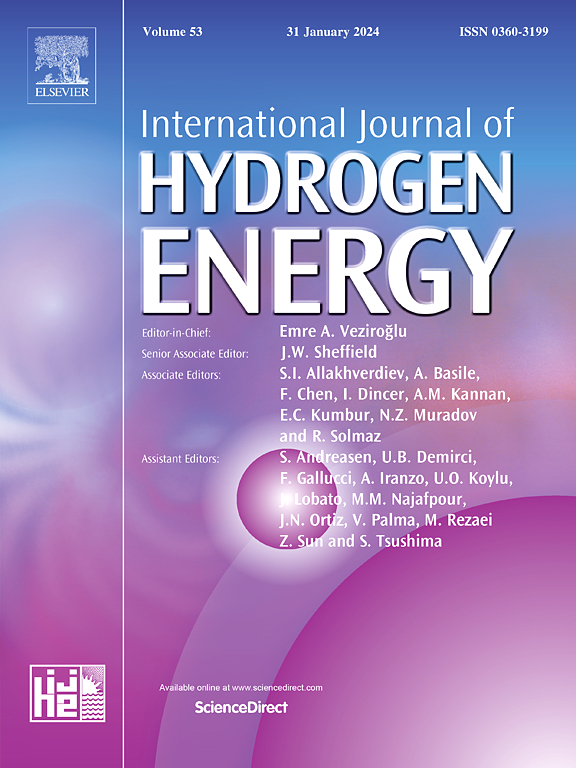Electrodeposited barnacle-like phosphorized nickel–copper porous catalysts for oxygen evolution reaction
IF 8.1
2区 工程技术
Q1 CHEMISTRY, PHYSICAL
引用次数: 0
Abstract
This work demonstrates the porous barnacle-like structure of NiCuP, which is co-electrodeposited on the nickel foam (NiCu/Ni foam) and does the phosphorization in a short time. Only the structure's surface can find phosphorus, which remains the conductivity of the nickel-copper and the porous structure (NiCuP-200/Ni foam). The catalysts show the overpotential of 250 mV for oxygen evolution reaction (OER) at the current density of 10 mA cm−2. The cell using the NiCuP-200/Ni foam as the anode for the water electrolysis shows a highly consistent current density of about 180 mA cm−2 at the cell potential of 1.8 V during 100 h operation. The phosphorization on the catalysts' surface helps the OER's activity. NiCuP-200/Ni foam remains porous after phosphorization, showing a high electrochemical surface area and low electrotransfer resistance.

电沉积类藤壶状磷镍铜多孔析氧催化剂
本工作展示了NiCuP的多孔藤壶状结构,该结构在泡沫镍(NiCu/Ni泡沫)上共电沉积,并在短时间内进行磷酸化。只有结构的表面可以找到磷,它保留了镍铜的导电性和多孔结构(NiCuP-200/Ni泡沫)。在电流密度为10 mA cm−2时,催化剂的析氧反应过电位为250 mV。使用NiCuP-200/Ni泡沫作为电解阳极的电池在1.8 V电势下运行100小时,电流密度约为180 mA cm -2。催化剂表面的磷酸化有助于OER的活性。NiCuP-200/Ni泡沫在磷酸化后仍保持多孔性,具有较高的电化学表面积和较低的电转移电阻。
本文章由计算机程序翻译,如有差异,请以英文原文为准。
求助全文
约1分钟内获得全文
求助全文
来源期刊

International Journal of Hydrogen Energy
工程技术-环境科学
CiteScore
13.50
自引率
25.00%
发文量
3502
审稿时长
60 days
期刊介绍:
The objective of the International Journal of Hydrogen Energy is to facilitate the exchange of new ideas, technological advancements, and research findings in the field of Hydrogen Energy among scientists and engineers worldwide. This journal showcases original research, both analytical and experimental, covering various aspects of Hydrogen Energy. These include production, storage, transmission, utilization, enabling technologies, environmental impact, economic considerations, and global perspectives on hydrogen and its carriers such as NH3, CH4, alcohols, etc.
The utilization aspect encompasses various methods such as thermochemical (combustion), photochemical, electrochemical (fuel cells), and nuclear conversion of hydrogen, hydrogen isotopes, and hydrogen carriers into thermal, mechanical, and electrical energies. The applications of these energies can be found in transportation (including aerospace), industrial, commercial, and residential sectors.
 求助内容:
求助内容: 应助结果提醒方式:
应助结果提醒方式:


